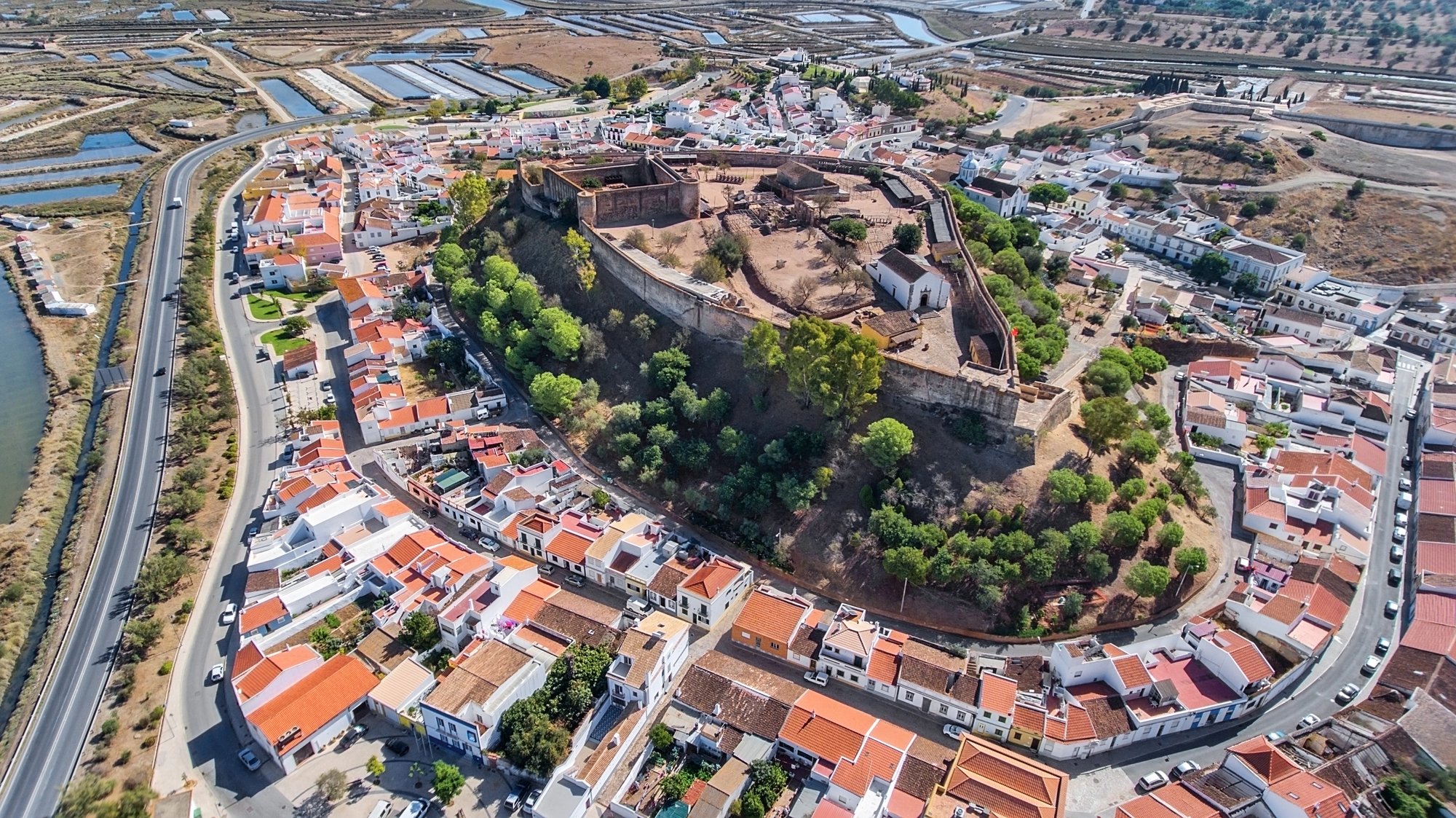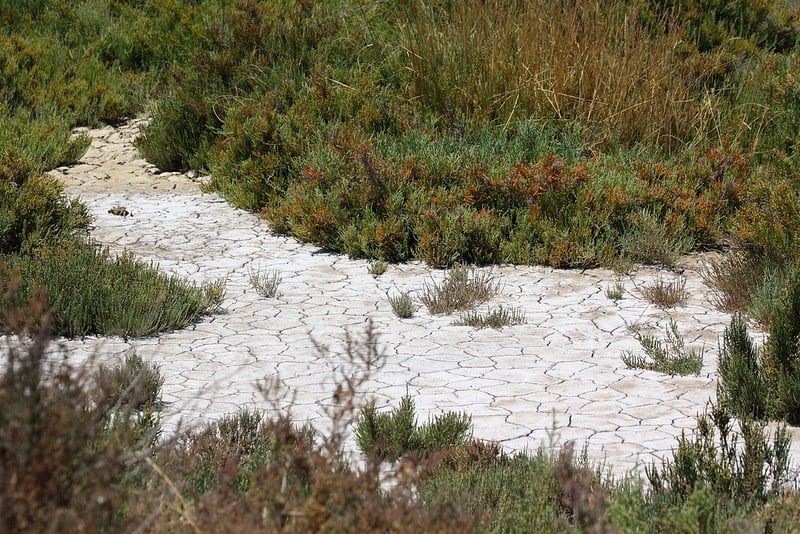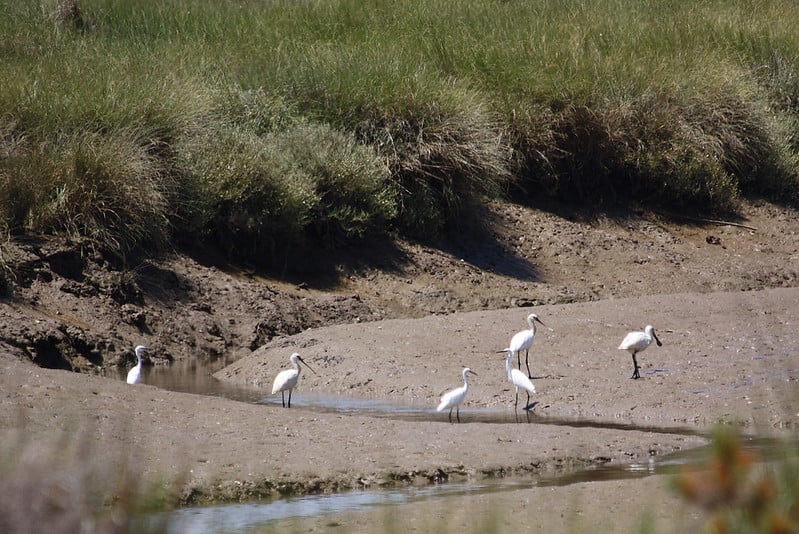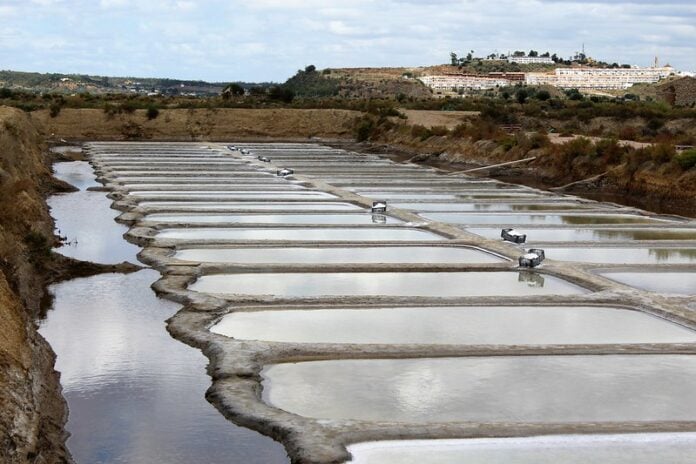When you think of the Algarve, it is undoubtedly the beach that first comes to mind. However, you can now add salt to the mix. Slightly inland, on the eastern edge of the region, a quieter destination awaits, just above the Guadiana River that separates Portugal from Spain. This is Castro Marim, a small town with a big history. While it was once a an important military outpost and later a headquarters of knights and explorers, today it is better known for its gleaming saltpans and the extraordinary wetlands that surround it. If you’ve not heard of it before, it’s time to learn more about this fascinating town.
Older Than Portugal Itself
The history of Castro Marim stretches back thousands of years, long before there was a Portugal or even a Rome. Archaeological digs reveal traces of human life here dating back to around 5,000 BC. At that time, the town was not as we see it today. Instead of rising from inland hills, it sat on a small island, surrounded by the shifting waters of an estuary. This location made it an ideal place for people in the early days to fish, farm, and trade.
By the time the Phoenicians began sailing along the Iberian coast, Castro Marim had become an important stop for ships transporting ores from the Algarve’s interior. Later, the Romans cemented its importance as a frontier town. The Guadiana River, running just below it, marked the line between Lusitania (the province that would become Portugal) and Baetica, which would later evolve into Andalusia in Spain.
The Moors and the Knights Templar
Centuries later, the Moors took control of Castro Marim and held it for about 500 years. From a simple fortress on the hill, they guarded the estuary and controlled the river. That changed in 1242, when King Afonso III of Portugal’s forces took back the village. Knowing how vital the place was to border defense, the king immediately fortified it.
The castle that dominates Castro Marim today dates from this period. This was where the Order of Christ established its first headquarters in 1319. The Order of Christ became the new name for the Knights Templar in Portugal and would go on to play a pivotal role in the country’s voyages of discovery. Henry the Navigator himself was linked to the castle, and an inscription suggests he may have lived here while serving as head of the order.
As threats from Spain and North Africa persisted, new fortifications were added. In the 17th century, the Fort of São Sebastião was constructed on a neighboring hill and created a powerful double line of defense. For a time, Castro Marim became the Algarve’s most important military base. Although the fort is usually closed, it springs to life during the annual Medieval Festival, (when is this?) when jousting knights, music, and food stalls transport visitors back to the Middle Ages.

Salt Pans and Flor de Sal
Despite its history as a military base, Castro Marim today is a peaceful place. Wandering its cobbled streets, you’ll see whitewashed cottages decorated with touches of cobalt blue, a traditional Algarvian style that lends the town a delightful cheer. You can also walk around the castle walls and look across to Spain, down to the Guadiana Bridge, and out to the wetlands and saltpans.
Salt has been harvested here since antiquity, and the tradition continues today. The salinas (geometric pools of shallow water) lie just below the town and reflect the sunlight in dazzling shades of white, blue, and pink.
This is where flor de sal, the “flower of salt,” is collected. These delicate crystals form on the surface of the pans and are skimmed off by hand. Prized by chefs around the world, flor de sal from Castro Marim is considered among the finest. Visitors can learn about this artisanal process at places like Salmarim, where guided tours explain how the salt is harvested, dried, and packaged. In summer, some pans even double as salt spas, where visitors can float effortlessly in the salt pools much like in the Dead Sea. The mineral-rich water is said to be therapeutic, but we would highly recommend the experience just for the fun of it.

Reserva Natural do Sapal
The saltpans form part of the wider Reserva Natural do Sapal de Castro Marim e Vila Real de Santo António, a protected area that covers over 2,000 hectares. It was created in 1975 and made history as one of Portugal’s first nature reserves.
The landscape here is a mosaic of tidal marshes, mudflats, and lagoons. These habitats attract an astonishing variety of wildlife, which makes the reserve a paradise for birdwatchers. Flamingos are the most popular residents, but you can also see storks, spoonbills, avocets, and hundreds of other species. Some of the wildlife stays year-round and others pass through on long migrations between Europe and Africa.

The wetlands are also home to the rare Mediterranean chameleon, an elusive reptile that can hide perfectly in the greenery. See if you can spot one! Shellfish populations in the mudflats further enrich the ecosystem and support both the wildlife and traditional fishing.
Visitors can explore the reserve on marked walking and cycling trails. These paths wind between saltpans and marshes and provide vantage points where birds gather and the horizon stretches unbroken. In summer, when the heat is strong, early morning or late afternoon visits are best, as the light is softer and the animals are more active.
When to Visit
Castro Marim is rewarding in every season, but the experience changes depending on the time of year. Spring and autumn are particularly good for birdwatching, as many migratory species pass through. Summer brings the added treat of salt spa experiences and the Medieval Festival at the end of August, when the town fills with color and energy. Winter, though quieter, still offers mild weather and the chance to enjoy the landscape with far less people.
How to Get There
The town is just a few kilometers north of Vila Real de Santo António, near the Spanish border. By car, it’s easily reached from the Algarve’s main A22 motorway. For those relying on public transport, regional trains and buses connect Castro Marim with nearby towns, although schedules may be limited so be sure to check ahead. Many visitors also cross from Spain, as the Guadiana International Bridge makes the border hop quick and simple.
Where to Stay and Eat
Most travelers visit Castro Marim as a day trip, but staying overnight allows you to take it slow and soak in the town’s beauty and wildlife. There are small guesthouses and rural hotels in the area, with some set within traditional farms. Dining is down-to-earth and rooted in simple, local ingredients. Expect fresh fish, hearty stews, and of course, dishes seasoned with Castro Marim’s own salt, which you truly can’t leave with trying!


